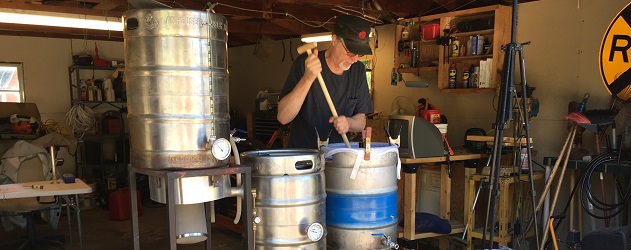Summer is here and I feel lazy. I have been making beer and have plans to make more but for the moment I have run out of steam. Probably because there is plenty of steam outside! Daytime temperatures are expected to be in the 90+F range for the next four or more days.
I did manage to produce three beers by brewing on three consecutive Sundays. Something I haven't done in a long time. Sunday, June 30th I made a Kentucky Common. Sunday, July 7th another Cream Ale and on the 14th I made one of Ron Pattinson's recipes from history... the original Russian Imperial Stout made by Barclay Perkins in 1848.
Maybe it's not lazy I'm feeling. Maybe it's exhaustion.
The Kentucky Common is interesting in that it was almost lost to history. A beer that was produced in Louisville Kentucky right around the turn of the 20th century but then lost a few short decades later when prohibition was enacted. It is often cited as being one of a handful of styles that are truly American in origin. It was craft and homebrewers who stumbled across references to Kentucky Common and through their research have been able to tease out the recipe.
One of those homebrewers posted her findings and resulting recipe in the homebrewtalk.com forum and that discussion has been one of the most active threads on the site since 2011. https://www.homebrewtalk.com/forum/threads/kiss-yer-cousin-rye-kentucky-common-ale.290419/
The grain bill will seem a bit unique to modern homebrewers. In it's simplest form there is only 6-row malt and corn grits. Some recipes include a bit of rye. If you can't find 6-row feel free to substitute 2-row but expect a slightly different flavor profile. Using corn grits will require you to perform a cereal mash. If you don't want to go through the bother you can use flaked corn instead. The rye is up to you. Keep it under 10% if you use it.
Here is the recipe I used. It comes from a craft brewer in Long Beach California called Ten Mile Brewing. They are said to produce the absolute best commercial example of the style in the U.S.
Mine is currently carbonating in a 5 gallon corny keg and it should be ready to tap. And with the temperature topping out near 95F today that sounds like a grand idea!



